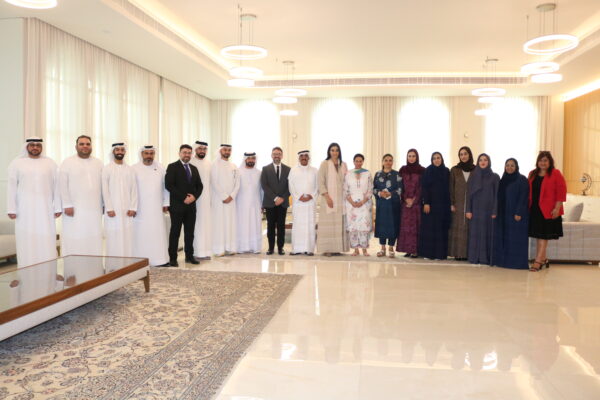Understanding the ecology of Global South settings – an article by H.E. Dr. Abdulla Belhaif AlNuaimi

American socialist William H. Whyte stated, “It is difficult to design a space that will not attract people. What is remarkable is how this has been accomplished”.
The words hold in the context of the Global South, comprising countries (having a colonial past) in Africa, Asia, Latin America and parts of the Middle East, where urbanization has become one of the defining phenomena of the 21st century. However, unlike the gradual and industry-driven growth of the Global North (Europe, North America and parts of East Asia), the cities here lack governance, infrastructureand economic support.
Considering that by 2050, the Global South will witness a 90 percent increase in the world’s urban population, it is imperative to analyze the multifaceted challenges it faces and explore innovative, context-sensitive solutions.
Research findings
Studies reveal the scale and speed of expansion, stating that cities like Dhaka (Bangladesh), Lagos (Nigeria) and Mumbai (India) are among the fastest-growing urban centres globally, with populations exceeding 20 million. Similarly, in Sub-Saharan Africa, by 2030, the population surge is expected to be 64 percent, compared to 32 percent in East Asia and 22 percent in South Asia.
Currently, over 60 percent of urban residents in Africa live in informal settlements, often lacking access to clean water, sanitation and secure housing. The infrastructure deficits include alack of proper roads, sewage systems and electricity. While in Kinshasa, Democratic Republic of Congo, only 10 percent of roads are paved and power outages are frequent, in Nairobi (Kenya), access to water remains a major issue and half the population relies on informal water vendors.
Similarly, urban poverty and inequality have become a bane for Bangladesh, Mexico and Nigeria. In fact, urban poverty has outpaced rural poverty, and slums exist adjacent to affluent neighborhoods, creating a stark spatialimbalance. Expeditious urban growth leads to environmental degradation, deforestation, air and water pollution and loss of biodiversity.
The prime example cities in this framework are Delhi (India) and Jakarta (Indonesia), which face severe air quality issues, with PM2.5 levels regularly exceeding safe limits.
Another distressing factor is climate vulnerability in regions where informal settlements are often located in high-risk zones with little infrastructure resilience. Thus, coastal cities, including Manila (Philippines), Dhaka and Lagos, are highly vulnerable to flooding and sea-level rise.
Since several cities lack coherent urban planning frameworks, fragmented governance and limited fiscal autonomy, thishinders effective service delivery. There’s an urgency to find a harmonious balance to overcome these shortcomings.
Participatory planning
However, in the midst of it all, certain cities have vanquished the imperfections with steady steps and firm resolve. For instance, Porto Alegre in Brazil pioneered participatory budgeting, allowing citizens to influence municipal spending. The model has been replicated in cities across Latin America and Africa, improving transparency and responsiveness.
In South Africa’s capital, Cape Town, the integrated development plan comprises upgrading informal settlements with basic services while preserving community networks. Likewise, in Thailand’s capital, Bangkok, the Baan Mankong program supports community-led housing improvements with government backing.
Meanwhile, setting benchmarks in the digital and data-driven space, Nairobi (in Kenya) and Accra (in Ghana) are using Geographic Information System (GIS) mapping and mobile data to plan infrastructure and monitor informal settlements. In the same way, smart city initiatives in Bengaluru (India) and Jakarta aim to improve service delivery through digital platforms.
In line with citizen-led schemes and unified design models, sustainable transport systemshave changed the way cities move. A major example of this concept is cities in Colombia. Medellín introduced the Metrocable, a cable car network that connects hillside slums to the city centre, reducing commute times and improvingaccess to workplaces and homes. Bogotá’s TransMilenio bus rapid transit system has become a global model for affordable andefficient urban mobility.
Therefore, in a way, encouraging secondary cities and decentralization can relieve pressure on megacities. In India, Indore and Surat have emerged as innovation hubs with better liveability indicators than larger metros. Both are recognized for their green practices.
Nature and equity
Importantly, the complex challenges posed by climate change and biodiversity loss require intertwined solutions that are reached through the frame of ‘nature and equity.’ This calls for conservation, offering strategic value for meeting environmental goals. More emphasis needs to be placed on reforestation, agroecology and biodiversity corridors, which would strengthen the ecological lens. That’s because the role of indigenous knowledge and cultural values in shaping ecological resilience is underrepresented.
Nature and equity recognize growing calls for conservation approaches to correct historical wrongs. The need for equitable conservation is powered by shared public concerns about pervasive global inequalities. Thus, local environmental knowledge, rights and practices must be acknowledged and marginalized voices must be heard to deliver better outcomes.
In the field of green infrastructure and climate adaptation, Taipei in Taiwan has implemented permeable pavements, urban tree planting, and solar mandates to combat heat and flooding. And Kampala, Uganda, is investing in wetlands restoration to manage stormwater and improve biodiversity.
Steering policies
Global concerns as well as examples illuminate the urgency and potential of urban transformation. Therefore, to change the scenario worldwide, the primary necessity is fiscal empowerment, as local governments need greater financial autonomy so that cities can adopt a long-term, inclusive planning fabric that aligns housing, transport and environmental goals. And while formulating policies, the focus should be on job creation, education and healthcare for marginalized urban populations.
As regards climate resilience, urban development must integrate adaptation strategies in vulnerable coastal and flood-prone areas. For several countries, it’s not easy or feasible to handle the environmental state of affairs on their own. Thus, international cooperation can support capacity building, technology transfer and financing for sustainable expansion.
Urbanization in the Global South is not merely a demographic trend but a profound transformation of space and society. While cities are undoubtedly the engines of economic activity, they should also be seen as living ecosystems where equity, sustainability and culture converge.
Poetically speaking, cities should not just be built of concrete and steel; they must be woven from the aspirations of people. And in the Global South, those aspirations are not only rising swiftly but are also rooted in a historical context.
Also read: Sustainable Mobility: Building Greener Cities for a Net-Zero Future





